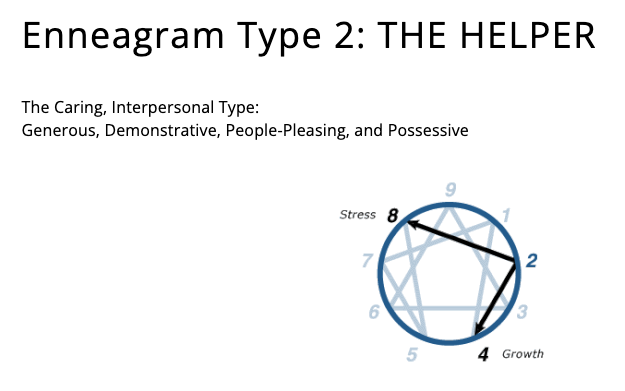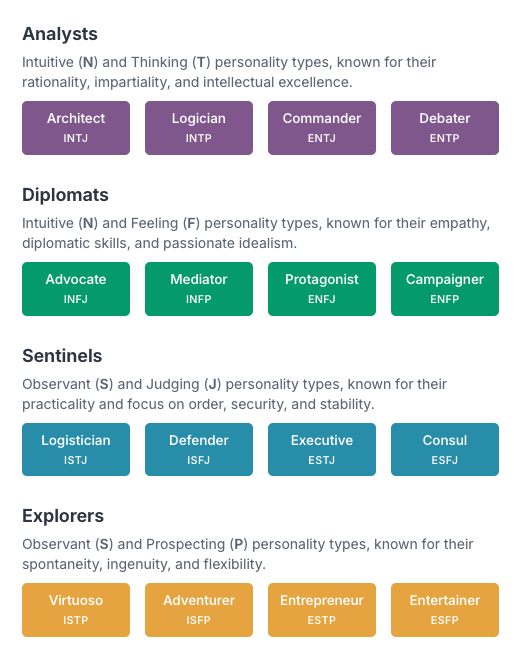Want to understand yourself better at work? These three personality tools can help you work with more clarity and less stress.

Summary: Tools like the Enneagram, MBTI, and Human Design can help you understand how you work best — and why you might be burning out. I’m a Helper, Consul, and Manifesting Generator, which suggests I need meaning, variety, and boundaries. Exploring your own results might help you stop pushing through what drains you and start working in a way that actually fits.
Understanding how you’re wired can help you make better decisions at work, communicate more clearly, and avoid burnout. Tools like the Enneagram, Myers-Briggs, and Human Design give you useful language to reflect on how you show up — and where you might be getting in your own way. Here’s how to start, using my own profile as an example.
You’re not broken — you just work differently
If you’ve ever sat at your desk wondering why you’re exhausted, behind on emails, or feeling out of sync with your job — you’re not alone. And you’re not the problem.
Sometimes, it’s not about fixing your habits: it’s about understanding your wiring.
When I look at my Enneagram, Myers-Briggs, and Human Design results side by side, it feels like someone has quietly been taking notes on me — then handed over the script. Not in a ‘put you in a box’ way, more like “hey, here’s why that thing always drains you, and here’s what might work better”.
These three tools helped me make sense of why I thrive on connection, love structure, and still need freedom to follow what excites me. If you’re curious about your own patterns — especially at work — they’re a great place to start.
Here’s how.
Step 1: What drives you (even when no-one’s looking)
Tool: Enneagram
The Enneagram looks at your core motivation — the lens through which you view the world and your place in it. It’s less about how you act, more about why.

My type: Type 2 — the Helper
For me, that means being a Type 2 — the Helper. I’m motivated by connection, care, and being needed. At work, this shows up in a strong drive to support others, build trust, and show up when it counts — but also in a tendency to overextend myself, especially when I feel responsible for everyone’s wellbeing.
What it revealed:
- I often tie my self-worth to how needed or appreciated I feel.
- I struggle to say no, even when I’m at capacity.
- I’m great at nurturing relationships, but need to set clearer boundaries.

Why it’s helpful: Knowing your type can help you catch the people-pleasing instinct before it kicks in. You can notice when you’re over-giving or overcommitting — and pause to ask what you need in that moment.
Try it: enneagraminstitute.com
Step 2: How you think, communicate and connect
Tool: MBTI / 16Personalities
This framework helps explain your social energy, how you make decisions, and the kind of environments that bring out your best.

My type: ESFJ – The Consul
I’m an ESFJ — supportive, practical, and people-focused. I’m energised by helping others succeed, creating structure, and bringing a sense of harmony to group dynamics. But the shadow side? Overcommitting. Struggling to separate others’ needs from my own. Wanting to be liked, sometimes at the cost of what’s sustainable.
What it revealed:
- I feel most energised when I know how my work supports the bigger picture.
- I thrive in collaborative environments with clear roles and shared values.
- I prefer structure and predictability, but I can adapt if I understand the “why.”

Why it’s helpful: Knowing your MBTI type is like having a map of your strengths and stress points. It helps with setting boundaries, communicating clearly, and understanding why some tasks or environments feel natural—while others feel draining.
Try it: 16personalities.com
Step 3: How you use energy and make decisions
Tool: Human Design
Human Design is the wild card of this trio — a blend of systems (astrology, chakras, I Ching, quantum physics) that maps how your energy flows and how you’re designed to make decisions. It’s a tad woo woo, but surprisingly grounding.

My type: Manifesting Generator
I’m a Manifesting Generator, which means I’m not built to do one thing forever. I’m fast, curious, and often skip steps (sorry, not sorry). I’m designed to respond to opportunities —not force them— and I burn out when I push ahead without clarity.
What it revealed:
- I work best when I follow what lights me up, not what I should do.
- I need variety and freedom to pivot.
- The frustration I feel when I’m boxed in isn’t a flaw — it’s a clue.

Why it’s helpful: This framework invites you to notice how decisions feel in your body. It’s especially useful if you’ve been taught to override your gut in favour of logic or expectations.
Try it: myhumandesign.com
What I’ve learned by putting it all together
Across these tools, a clear pattern emerged:
- I’m naturally energetic, supportive, and wired for connection. I love creating systems and experiences that genuinely help people.
- But I burn out when I ignore my own needs or try to do it all for everyone else.
- I’m at my best when I have room to follow what lights me up, while still feeling grounded in purpose and community.
This isn’t just a nice insight — I use it to plan my week, protect my energy, and shape the work I say yes to.
Want to try this for yourself? Start here
- Pick one tool to explore this week. Don’t overthink it — just follow your curiosity.
- Write down three things that resonate. Not the whole report — just the bits that make you go “ugh, yes.”
- Ask yourself: How does this show up in my work life right now? Is it helping or hurting?
- Adjust one thing. Could be how you structure your day, how you communicate, or how you recover from stress.
This isn’t about labelling — it’s about language
You don’t need to become a walking personality chart. The goal here isn’t to define yourself forever — it’s to understand yourself enough to make work feel a little more like you.
You’re not too sensitive, too scattered, too slow, too intense. You just haven’t been taught how to work with your wiring.
These tools won’t solve everything. But they might give you the language —and permission— to work in a way that actually fits.